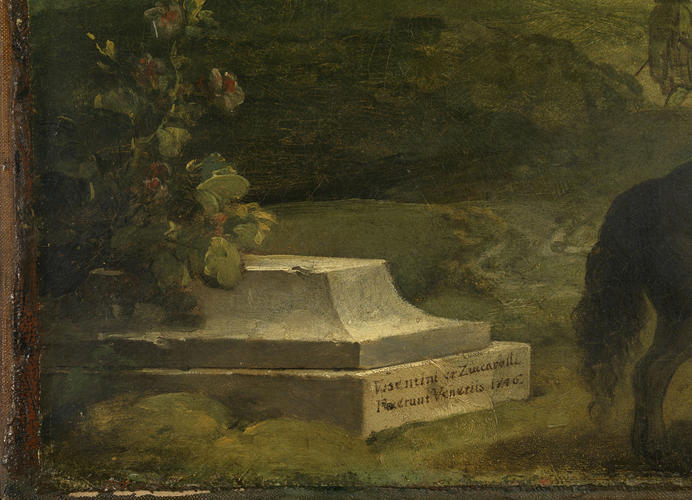-
1 of 253523 objects
View of the House of General Wade Signed and dated 1746
Oil on canvas | 83.5 x 130.5 x 2.5 cm (support, canvas/panel/stretcher external) | RCIN 407286

Francesco Zuccarelli (Pitigliano 1702-Florence 1788)
View of the House of General Wade Signed and dated 1746

Francesco Zuccarelli (Pitigliano 1702-Florence 1788)
View of the House of General Wade Signed and dated 1746

Francesco Zuccarelli (Pitigliano 1702-Florence 1788)
View of the House of General Wade Signed and dated 1746



-
The picture is one of a series of eleven English architectural subjects painted collaboratively by Antonio Visentini and Fransceso Zuccarelli for Consul Joseph Smith. Trained as a painter, Visentini had an association with Consul Smith which began around 1717, and led to his production in 1735 of a set of engravings after Canaletto's series of views of the Grand Canal in Smith's collection. Visentini was also to act as an architect and general artistic factotum for Smith until the latter's death in 1770. Smith and Visentini shared a great interest in the designs and theories of the sixteenth-century Venetian architect Andrea Palladio, whose work they considered superior to that of later baroque architects. Smith published a reprint of Palladio's architectural treatise, I quattro libri, in 1768, and in 1743-4 he had commissioned from Canaletto a series of pictures depicting Venetian monuments, including the principal buildings of Palladio in imaginary settings. It was perhaps the combination of their interest in Palladio and the commission to Canaletto that prompted Smith to commission the series of overdoor capricci of English neo-Palladian buildings to which this image belongs. Visentini painted the buildings using volumes of British architectural engravings for reference, whilst Francesco Zuccarelli painted most of the figures and all of the landscape settings. They date from 1746 and were possibly intended as overdoors for the Consul's villa at Mogliano, on the Venetian mainland near Treviso. Eight of the views were hung in the Entrance Hall at Buckingham House by 1819. They were moved to the Grand Corridor at Windsor Castle in 1828.
The façade of the house occupies the right side of the canvas. A lady is emerging from the door, there are servants outside and another woman is feeding a parrot in the open window above. At the left two grooms hold horses for two gentlemen, their dogs at their feet. At the left is an Italianate landscape. General (later Field-Marshal) George Wade's house was designed by Lord Burlington and was situated in Old Burlington Street, London. Buried within the Burlington Hotel, the house survived until 1935; it was noted as handsome but uncomfortable. Lord Chesterfield is recorded as suggesting that 'as the General could not live in it at his ease, he had better take a house over against it and look at it.' The architectural portion of this work is based on the elevation engraved in Colen Campbell's Vitruvius Britannicus, published in 1725. The good quality painted architecture is remarkably close in style to Canaletto.
Signed and dated on the stone pedestal, extreme left: 'Visentini et Zuccarelli / Fecerunt Venetiis 1746.'Provenance
Acquired by George III from the collection of Consul Smith in 1762 (Italian List no 169); recorded in the Hall at Buckingham Palace in 1790
-
Medium and techniques
Oil on canvas
Measurements
83.5 x 130.5 x 2.5 cm (support, canvas/panel/stretcher external)
Category
Object type(s)